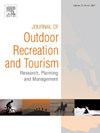The rise and fall of the social media platform Flickr: Implications for nature recreation research
IF 3.6
3区 管理学
Q1 HOSPITALITY, LEISURE, SPORT & TOURISM
Journal of Outdoor Recreation and Tourism-Research Planning and Management
Pub Date : 2025-03-28
DOI:10.1016/j.jort.2025.100880
引用次数: 0
Abstract
Social media is increasingly used as data source for studying nature recreation, with Flickr being one of the most used sources. Nevertheless, a detailed understanding of these global social media datasets – their geographical and temporal distributions – remains limited. First, we reviewed literature studying nature recreation with social media data to investigate how Flickr has been used and what has motivated its use for research purposes. Second, we described the spatiotemporal characteristics of 229 million georeferenced uploads and 1.5 million users in general and in protected areas during 2010–2022. Finally, we tested the reliability of data acquisition via Flickr’s Application Programming Interface (API). We found extensive use of Flickr in nature recreation research, where its use is most often motivated by data accessibility. However, the volume of Flickr data and the platform’s active user base in 2022 had more than halved from its peak in 2011. Geographically, the use of Flickr is strongly biased to Europe and North America. Flickr data are scarcely available from less-visited protected areas. Much of Flickr data from African and Asian protected areas are produced by visitors from Europe and North America. Finally, we found that Flickr’s API responds inconsistently to spatiotemporal queries, compromising the acquisition of full coverage datasets and the transparency and transferability of research. Flickr has been an important data source despite its relatively small and geographically concentrated user base. Future research use of the data requires careful consideration of these limitations and their impacts in different research contexts.
Management implications
- •Flickr is a popular data source in nature recreation research for analysing visitation patterns and preferences of people.
- •Insights from Flickr can inform plans and strategies for sustainable management of nature-based tourism and recreation, however, underlying properties of the data should be acknowledged when using these data.
- •Flickr’s popularity has dropped and the data are skewed towards active users in the Global North.
- •Flickr’s API may cause inconsistencies in data acquisition, jeopardizing repeatability of findings.
- •Thus, the usefulness of these data for understanding nature-based recreation is limited and a critical view is needed when using them in research and practice.
求助全文
约1分钟内获得全文
求助全文
来源期刊

Journal of Outdoor Recreation and Tourism-Research Planning and Management
HOSPITALITY, LEISURE, SPORT & TOURISM-
CiteScore
6.70
自引率
5.30%
发文量
84
期刊介绍:
Journal of Outdoor Recreation and Tourism offers a dedicated outlet for research relevant to social sciences and natural resources. The journal publishes peer reviewed original research on all aspects of outdoor recreation planning and management, covering the entire spectrum of settings from wilderness to urban outdoor recreation opportunities. It also focuses on new products and findings in nature based tourism and park management. JORT is an interdisciplinary and transdisciplinary journal, articles may focus on any aspect of theory, method, or concept of outdoor recreation research, planning or management, and interdisciplinary work is especially welcome, and may be of a theoretical and/or a case study nature. Depending on the topic of investigation, articles may be positioned within one academic discipline, or draw from several disciplines in an integrative manner, with overarching relevance to social sciences and natural resources. JORT is international in scope and attracts scholars from all reaches of the world to facilitate the exchange of ideas. As such, the journal enhances understanding of scientific knowledge, empirical results, and practitioners'' needs. Therefore in JORT each article is accompanied by an executive summary, written by the editors or authors, highlighting the planning and management relevant aspects of the article.
 求助内容:
求助内容: 应助结果提醒方式:
应助结果提醒方式:


